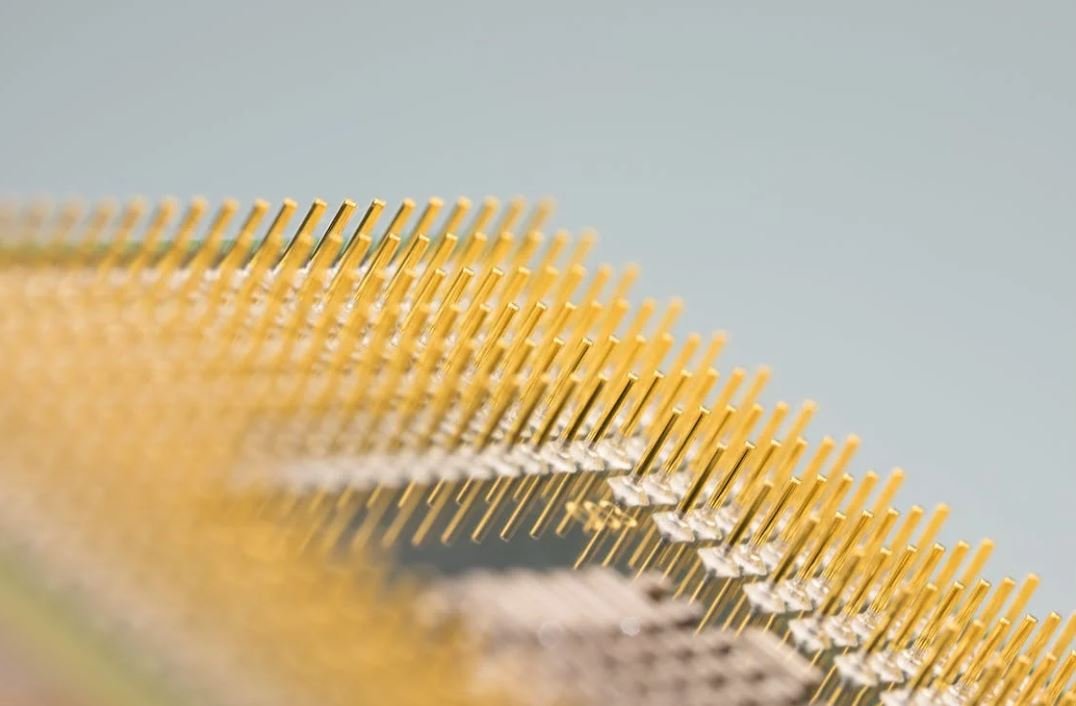Production or Use Method
When it comes to assessing economic activity, economists often rely on two primary methods: the production method and the use method. These approaches provide valuable insights into the overall health and performance of an economy. Understanding how these methods work can help policymakers, businesses, and individuals make informed decisions.
Key Takeaways:
- The production method measures economic activity by assessing the value of goods and services produced within a specific time frame.
- The use method measures economic activity by examining the value of goods and services used within a given period.
- Both methods offer unique perspectives on economic activity and are often used together to provide a comprehensive analysis.
The Production Method
The production method calculates economic activity by focusing on the value of goods and services produced within a specific time frame. This method considers various factors such as raw materials, labor costs, and overhead expenses to determine the overall value of production. It provides insights into the growth and productivity of different sectors of the economy. For example, analyzing the production method can help identify industries that are experiencing growth and those that may be struggling. *This method is widely used in assessing GDP and economic growth.*
The Use Method
The use method measures economic activity by examining the value of goods and services used within a given period. This method takes into account household consumption, investments, government spending, and net exports to determine the overall demand for goods and services. By analyzing the use method, economists can gain insights into the spending patterns of individuals, businesses, and the government, as well as the overall balance of trade with other countries. *Focusing on the use method provides a different perspective on economic activity, looking at the demand side of the equation.*
Comparing the Methods
While both the production and use methods provide valuable insights, they approach economic activity from different angles. Here are some key points to consider:
| Production Method | Use Method | |
|---|---|---|
| Perspective | Focused on the supply side | Focused on the demand side |
| Factors Considered | Value of goods and services produced | Value of goods and services used |
| Application | Calculating GDP and economic growth | Assessing consumer and government spending |
Both methods offer unique perspectives and complement each other in providing a comprehensive understanding of economic activity. By using a combination of the two methods, economists can gain a deeper insight into an economy’s performance and identify potential areas of strength or weakness.
Example of the Methods in Action
To further illustrate the differences between the production and use methods, let’s consider a hypothetical scenario:
- In a given year, the manufacturing sector experiences significant growth and produces goods with a total value of $1 billion.
- However, due to decreased consumer spending and increased imports, the overall use of goods and services in the economy only amounts to $800 million.
In this example, the production method would indicate a positive growth trend in the manufacturing sector, while the use method would suggest a weaker overall demand for goods and services. By considering both methods together, economists can identify the potential imbalance between production and consumption, which may require further analysis and intervention.
The Importance of Using Both Methods
While the production and use methods provide valuable insights individually, combining them offers a more comprehensive understanding of an economy’s performance. These methods help policymakers, businesses, and individuals make informed decisions, identify potential issues, and assess the overall health of an economy. By utilizing both methods, a more holistic view of economic activity can be achieved.
Wrapping Up
Understanding the production and use methods is essential for analyzing economic activity effectively. Each method offers unique perspectives and contributes to a comprehensive assessment of an economy. By examining both the supply and demand sides of the equation, economists can gain a deeper understanding of economic performance and plan accordingly without a specific “knowledge cutoff date”. By combining these methods, policymakers and individuals can make well-informed decisions to support sustainable economic growth and development.

Common Misconceptions
Paragraph 1
One common misconception about production or use method is that it is always more cost-effective to produce products rather than rely on outsourcing or purchasing from other companies. However, this is not always the case.
- Outsourcing can often provide lower production costs, taking advantage of specialized knowledge and resources of other companies.
- Purchasing from established suppliers can ensure better quality and reliability, saving costs associated with product defects or failures.
- Relying solely on production can lead to the underutilization of resources and increased overhead costs.
Paragraph 2
Another misconception is that all products must be produced from scratch to meet specific needs or requirements. While this may be true for certain industries or unique products, many businesses can benefit from utilizing existing resources and components.
- Modifying existing products can save time and resources compared to starting from square one.
- Using standard components can increase efficiency and reduce production costs.
- Adapting existing products can often lead to faster market entry and greater customer satisfaction.
Paragraph 3
Some people believe that the use method limits their options and creative freedom, as it involves relying on existing products or services. However, this is not entirely true as the use method can still offer innovative opportunities.
- Combining different existing products or services can result in unique and innovative solutions.
- Customizing existing products or services can meet specific requirements and stand out in the market.
- Improving upon existing products or services can lead to breakthroughs and differentiation.
Paragraph 4
A misconception surrounding the production or use method is that it only applies to physical products. In reality, this method can also be applied to service-oriented businesses.
- Service-oriented businesses can utilize existing methods and processes to efficiently deliver their offerings.
- Adapting and customizing existing service frameworks can enhance customer experience and satisfaction.
- Innovation in service delivery can be achieved through the use of existing technologies and techniques.
Paragraph 5
Finally, there is a misconception that the production or use method is a black-and-white choice, with businesses either fully committing to one approach or the other. In reality, a hybrid approach can often provide the best results.
- Combining production and use methods can leverage the strengths of each approach, leading to optimal outcomes.
- Adopting a hybrid approach allows businesses to be flexible and adapt to changing market needs and demands.
- The hybrid approach can provide a balance between cost-effectiveness and customization, ensuring competitiveness in the market.

Production Methods of Different Food Products
This table illustrates the various production methods used for different food products. It highlights the different techniques and processes utilized to bring these products to our tables, ensuring quality, taste, and safety.
| Food Product | Production Method |
|————–|——————|
| Bread | Traditional Oven |
| Cheese | Fermentation |
| Yogurt | Culturing |
| Canned Fish | Thermal Processing |
| Pasta | Extrusion |
| Chocolate | Conching |
| Coffee | Roasting |
| Ice Cream | Churning |
| Beer | Brewing |
| Honey | Extraction |
Energy Consumption Comparison of Various Appliances
This table compares the energy consumption of various household appliances. By understanding the energy usage of these devices, we can make informed choices to conserve energy and reduce our carbon footprint.
| Appliance | Energy Consumption (kWh/year) |
|————-|——————————-|
| Refrigerator | 400 |
| Air Conditioner | 1,000 |
| Washing Machine | 200 |
| Dishwasher | 400 |
| Television | 100 |
| Computer | 150 |
| Hair Dryer | 50 |
| Microwave Oven | 100 |
| Electric Oven | 300 |
| Electric Kettle | 80 |
Annual Carbon Emissions by Transportation Method
This table showcases the annual carbon emissions per passenger for different transportation methods. It provides insights into the environmental impact caused by various means of transportation, encouraging us to consider more sustainable options for travel.
| Transportation Method | Carbon Emissions (kg CO2/passenger) |
|———————–|———————————-|
| Car (Gasoline) | 2,200 |
| Bus | 900 |
| Train (Electric) | 100 |
| Bicycle | 0 |
| Airplane (Short Haul) | 430 |
| Airplane (Long Haul) | 920 |
| Motorcycle | 1,200 |
| Walking | 0 |
| Scooter | 650 |
| Electric Car | 600 |
Comparison of Renewable Energy Sources
This table compares different renewable energy sources in terms of their efficiency, cost, and environmental impact. Understanding the characteristics of these sources can aid in the transition toward more sustainable and clean energy alternatives.
| Renewable Energy Source | Efficiency (%) | Cost ($/kWh) | Environmental Impact |
|————————-|—————-|————–|———————-|
| Solar | 15-22 | 0.05-0.30 | Low |
| Wind | 25-45 | 0.05-0.15 | Low |
| Hydropower | 80 | 0.05-0.20 | Low to Moderate |
| Geothermal | 10-23 | 0.04-0.10 | Low |
| Biomass | 20-25 | 0.06-0.15 | Moderate to High |
| Tidal | 80 | 0.15-0.30 | Low |
| Wave | 40 | 0.10-0.20 | Low to Moderate |
| Nuclear | 33-37 | 0.08-0.15 | Moderate |
| Natural Gas | 40-60 | 0.05-0.10 | Moderate |
| Oil | 35-45 | 0.10-0.25 | High |
Comparison of Smartphone Specifications
This table offers a comparison of various smartphone specifications, allowing consumers to make informed decisions based on their personal preferences and needs when purchasing a new device.
| Smartphone Model | CPU (GHz) | RAM (GB) | Storage (GB) | Display Size (inches) |
|——————|———–|———-|————–|———————–|
| iPhone 12 | 2.99 | 4 | 64/128/256 | 6.1 |
| Samsung Galaxy S21 | 2.84 | 8 | 128/256/512 | 6.2 |
| Google Pixel 5 | 2.4 | 8 | 128 | 6.0 |
| OnePlus 9 | 2.84 | 8/12 | 128/256 | 6.55 |
| Xiaomi Mi 11 | 2.84 | 8/12 | 128/256/512 | 6.81 |
| Huawei P40 Pro | 2.86 | 8 | 128/256/512 | 6.58 |
| LG Velvet | 2.4 | 6/8 | 128 | 6.8 |
| Sony Xperia 1 II | 2.84 | 8 | 256 | 6.5 |
| Motorola Edge+ | 2.84 | 12 | 256 | 6.7 |
| Oppo Find X3 Pro | 2.84 | 8/12 | 256 | 6.7 |
Comparison of Social Media User Statistics
This table presents a comparison of user statistics among popular social media platforms, providing insights into their user bases, growth rates, and global reach.
| Social Media Platform | Active Users (in millions) | Monthly User Growth Rate | Global Reach (%) |
|———————–|—————————-|————————–|——————|
| Facebook | 2,850 | 1.57 | 36.29 |
| Instagram | 1,220 | 2.87 | 19.10 |
| YouTube | 2,291 | 1.21 | 30.67 |
| Twitter | 330 | 1.65 | 4.21 |
| LinkedIn | 740 | 2.36 | 9.45 |
| Pinterest | 475 | 3.72 | 6.03 |
| Snapchat | 480 | 2.17 | 6.10 |
| TikTok | 732 | 5.67 | 9.35 |
| Reddit | 430 | 1.59 | 5.52 |
| WhatsApp | 2,000 | 1.79 | 25.47 |
Medal Count of Top Olympic Countries
This table displays the medal counts of the top-performing countries in the Olympic Games, highlighting their achievements and dominance in the global sporting event.
| Country | Gold Medals | Silver Medals | Bronze Medals | Total Medals |
|———–|————-|—————|—————|————–|
| United States | 1132 | 907 | 793 | 2832 |
| China | 608 | 473 | 451 | 1532 |
| Russia | 589 | 487 | 489 | 1565 |
| Germany | 428 | 455 | 407 | 1290 |
| Great Britain | 263 | 295 | 293 | 851 |
| France | 253 | 267 | 292 | 812 |
| Italy | 246 | 214 | 241 | 701 |
| Australia | 147 | 163 | 187 | 497 |
| Japan | 206 | 160 | 177 | 543 |
| Canada | 199 | 209 | 263 | 671 |
Comparison of Global GDPs
This table compares the Gross Domestic Products (GDP) of different countries, showcasing their economic strength and influence on the global stage.
| Country | GDP (in trillion USD) |
|—————–|———————-|
| United States | 21.43 |
| China | 15.42 |
| Japan | 5.18 |
| Germany | 3.84 |
| United Kingdom | 2.83 |
| India | 2.78 |
| France | 2.71 |
| Italy | 2.01 |
| Brazil | 1.84 |
| Canada | 1.72 |
Comparison of Average Global Temperatures
This table compares the average global temperatures over the past century, highlighting the trend of global warming and the impact of climate change.
| Year | Average Global Temperature (°C) |
|——-|——————————–|
| 1900 | 13.8 |
| 1920 | 13.7 |
| 1940 | 13.9 |
| 1960 | 14.1 |
| 1980 | 14.3 |
| 2000 | 14.7 |
| 2010 | 14.9 |
| 2015 | 15.0 |
| 2017 | 15.1 |
| 2020 | 15.2 |
In conclusion, these tables provide valuable information and comparisons across various topics, ranging from food production methods to global temperatures. By analyzing the data, we can gain insights into the trends, impacts, and choices we have in various aspects of our lives. With this knowledge, we can make better-informed decisions that contribute to a more sustainable and efficient future.
Frequently Asked Questions
What is the difference between production and use method?
The production method focuses on the process of creating a product, while the use method focuses on the application or utilization of a product or service.
How is the production method determined?
The production method is determined by factors such as available resources, technology, and desired output. It involves planning, organizing, and executing a series of steps to transform inputs into the desired output.
What are the advantages of the production method?
The advantages of the production method include efficient resource allocation, higher productivity, quality control, and the ability to meet demand in a timely manner.
What are some common examples of the production method?
Common examples of the production method include manufacturing processes for automobiles, electronics, textiles, and food products. It can also include the production of services, such as software development or construction.
What is the use method?
The use method refers to the process of utilizing or employing a product or service to achieve a specific goal or outcome. It involves understanding the features and functionalities of the product and applying them in the intended manner.
How does the use method affect product performance?
The use method can significantly impact product performance. Proper understanding and adherence to the instructions and guidelines provided by the manufacturer can ensure optimal and safe usage, resulting in the desired performance and longevity of the product.
Are there any risks or limitations associated with the use method?
Yes, there could be risks or limitations associated with the use method. These can vary depending on the product or service. To minimize risks, it is advisable to follow recommended precautions, maintenance procedures, and safety guidelines provided by the manufacturer.
Can the production and use methods be modified or improved?
Yes, the production and use methods can be modified or improved over time. Advancements in technology, research, and feedback from users can lead to enhancements in production processes and the design of products that offer better performance, efficiency, and user experience.
How do I determine which method is suitable for my needs?
Determining the suitable method depends on factors such as your specific requirements, available resources, budget, and intended outcome. It may be helpful to conduct research, consult experts, or seek advice from professionals in the field to make an informed decision.
Is it possible to combine elements of both methods?
Yes, it is possible to combine elements of both methods. In some cases, a hybrid approach that merges production and use methods can be adopted to achieve desired outcomes. This can involve customizing products to better suit individual needs while ensuring efficient production processes to meet demand.




